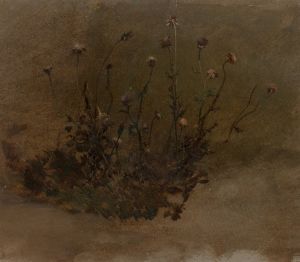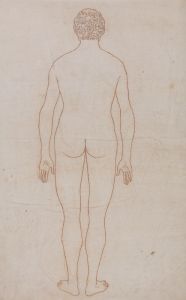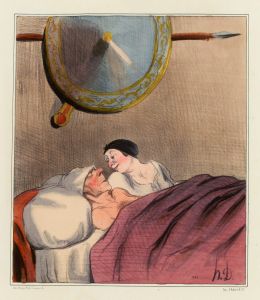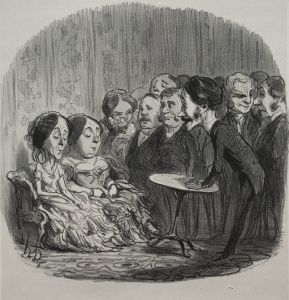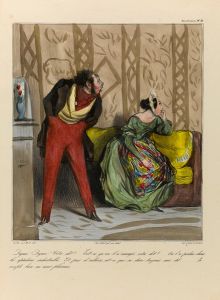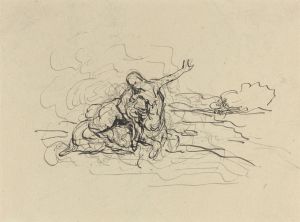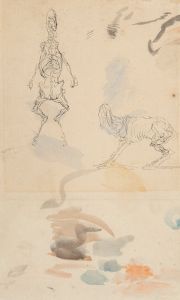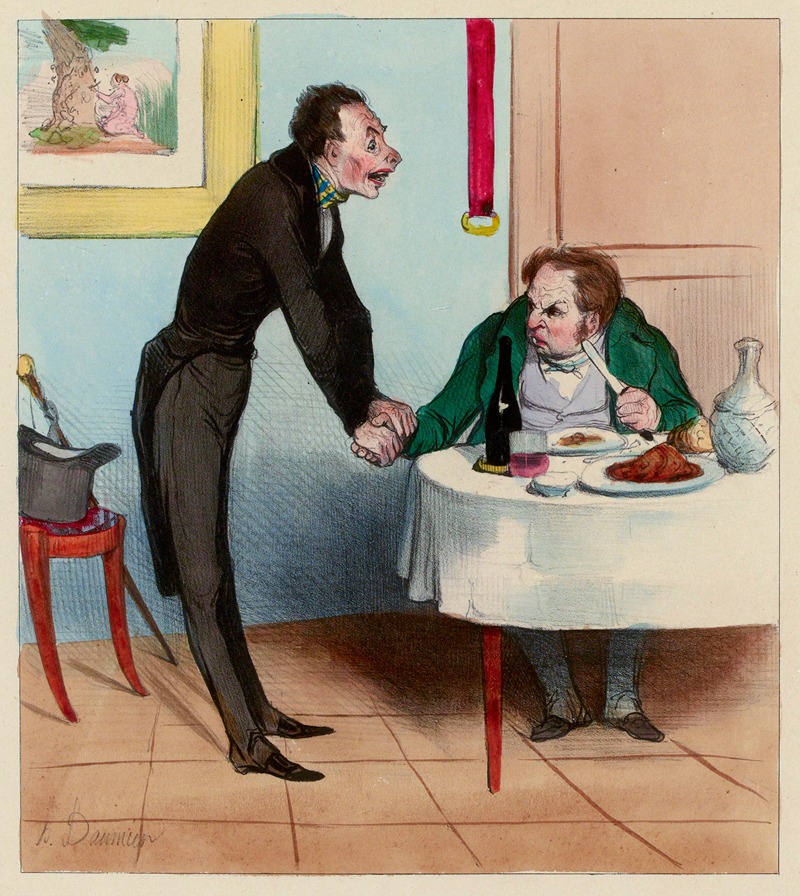
Cours d’histoire naturelle 09 Le lierre plante parasite
A hand-painted replica of Honoré Daumier’s masterpiece Cours d’histoire naturelle 09 Le lierre plante parasite, meticulously crafted by professional artists to capture the true essence of the original. Each piece is created with museum-quality canvas and rare mineral pigments, carefully painted by experienced artists with delicate brushstrokes and rich, layered colors to perfectly recreate the texture of the original artwork. Unlike machine-printed reproductions, this hand-painted version brings the painting to life, infused with the artist’s emotions and skill in every stroke. Whether for personal collection or home decoration, it instantly elevates the artistic atmosphere of any space.
Honoré Daumier, a French artist known for his satirical works and social commentary, created a series of lithographs titled Cours d’histoire naturelle (Natural History Lessons) in the mid-19th century. One of the lithographs in this series is Le lierre plante parasite (The Ivy, a Parasitic Plant). This artwork was published in 1840 as part of a collection of caricatures that humorously depicted various aspects of natural history and human behavior.
Daumier's Cours d’histoire naturelle series was published in the satirical magazine La Caricature, which was known for its political and social critiques during the July Monarchy in France (1830–1848). The series used the metaphor of plants and animals to comment on human traits, societal norms, and political issues. In Le lierre plante parasite, Daumier humorously compares the ivy plant, which relies on other structures for support, to parasitic or dependent behaviors in human society. The lithograph reflects Daumier's sharp wit and his ability to blend natural history with social satire.
The artwork is executed in Daumier's characteristic style, which combines expressive lines and exaggerated forms to emphasize the humor and critique in his subject matter. As a lithograph, it was created using a printing process that allowed for wide distribution, making it accessible to a broad audience. This accessibility was central to Daumier's work, as he sought to engage the public in discussions about contemporary issues through his art.
Daumier's works, including Le lierre plante parasite, are significant for their role in the development of caricature as a form of social and political commentary. His ability to use humor and metaphor to address complex topics has earned him recognition as one of the most influential satirical artists of the 19th century. Today, his lithographs are studied not only for their artistic merit but also for their insights into the cultural and political climate of his time.
The original lithograph is part of Daumier's extensive body of work, which includes over 4,000 lithographs, paintings, and sculptures. Many of his works, including pieces from the Cours d’histoire naturelle series, are preserved in major art institutions such as the Louvre in Paris and the Metropolitan Museum of Art in New York.





